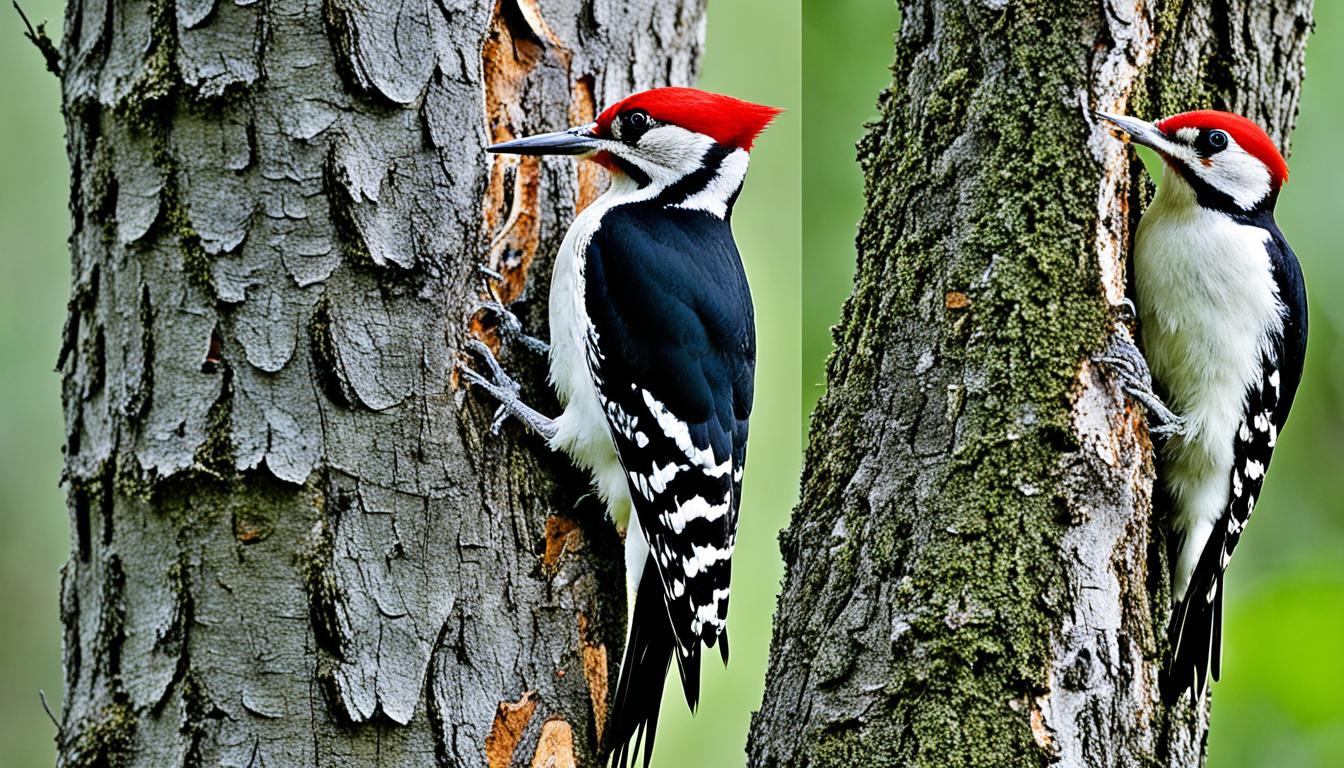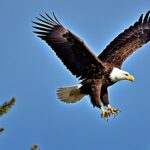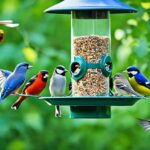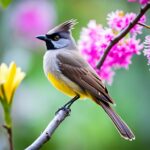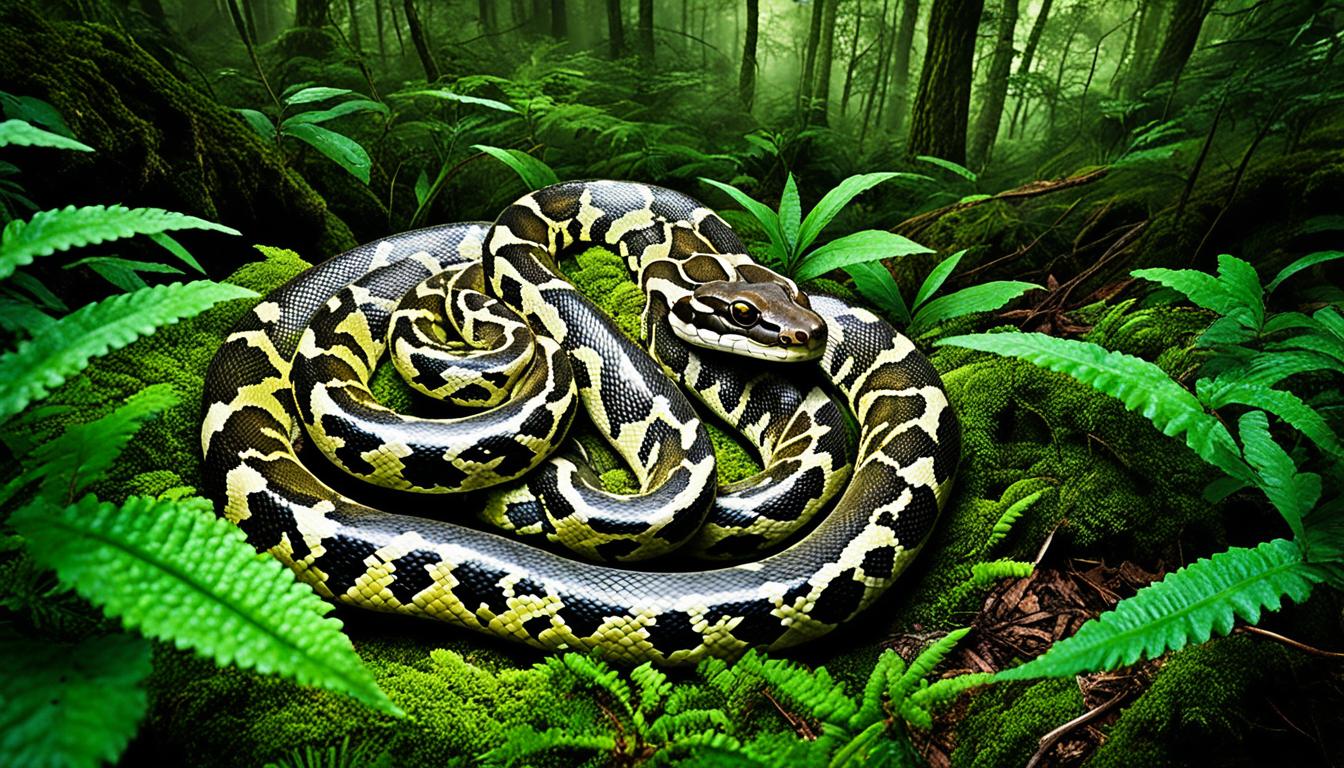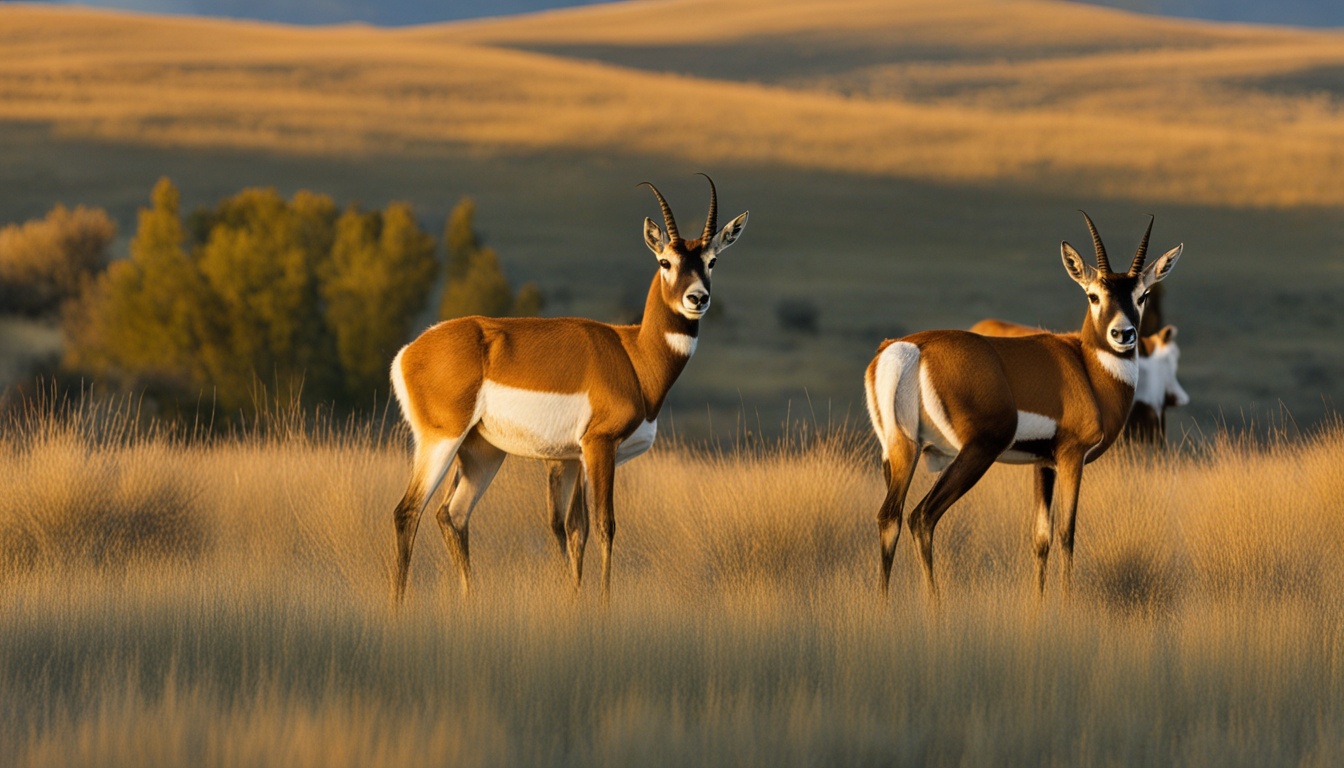Ever thought about how birdwatchers tell one woodpecker from another? The USA has 23 kinds of woodpeckers. Learning about their features, where they live, and what they do is key to knowing who they are.
Take the Red-headed Woodpecker. Or the hard-to-find Ivory-billed Woodpecker. Each has special things that make birdwatching thrilling. A good woodpecker species identification guide makes finding and knowing them easier.
Go exploring and see the different American woodpecker species in their homes. They’re found in all kinds of places, from thick woods to dry deserts. Getting good at spotting them by their size, colors, and actions will make you love their variety even more.
Introduction to Woodpecker Species in the United States
Woodpeckers play a big role in our bird family. In the United States, we have 23 kinds. Each is different, living in unique places and doing special things. Learning about them shows us the great variety of nature here. It also reminds us to take care of their homes.
Overview of Woodpecker Species
The USA’s woodpeckers come in many sizes, colors, and actions. Some, like the Northern Flicker, feed on the ground. Others, like the Acorn Woodpecker, keep acorns in tree bark. These actions show how important each one is to their environment.
Habitats and Distribution
Woodpeckers live in all kinds of places across the USA. The Red-headed Woodpecker likes open woods and savannas. Meanwhile, the Pileated Woodpecker enjoys big, untouched forests. Sadly, people have hurt some woodpecker homes. The Ivory-billed and Red-cockaded Woodpeckers are struggling. They need special help to keep from disappearing. Organisations like the American Bird Conservancy are working hard to protect these special places.
| Woodpecker Species | Habitat | Conservation Status |
|---|---|---|
| Ivory-billed Woodpecker | Bottomland Hardwood Forests | Possibly Extinct |
| Red-cockaded Woodpecker | Pine Forests | Endangered |
| Acorn Woodpecker | Oak Woodlands | Stable |
It’s important to work together to keep woodpeckers safe. This helps them and our environment thrive.
Physical Characteristics for Woodpecker Species Identification
Knowing the unique features of woodpecker species can make birdwatching more exciting. Important features like their colors, size, and shape are key to spotting different woodpeckers. These are your first line of defense when trying to figure out which woodpecker is which.
Plumage Patterns
Markings on their feathers are very telling for spotting woodpeckers. For example, a woodpecker with a black back fits right in in burnt forests. Identifying these markings helps you tell woodpeckers apart and know where they like to live.
Size and Shape
How big or small a woodpecker is, and its body shape, are also big clues. With little ones like the Downy Woodpecker to the large Pileated Woodpecker, noting these differences is crucial. This knowledge is golden in helping you quickly pick out different kinds of woodpeckers.
Bill Shape and Size
The size and shape of the bill are key for pinning down a woodpecker. Take the Hairy Woodpecker with its long bill for example. Such details are must-knows for those serious about birdwatching.
| Characteristic | Description | Example Species |
|---|---|---|
| Plumage Patterns | Distinctive black-backed plumage in charred forests | Black-backed Woodpecker |
| Size and Shape | Varies from small to large stature | Downy Woodpecker, Pileated Woodpecker |
| Bill Shape and Size | Bill length often proportionate to head size | Hairy Woodpecker |
Common Behavioral Traits of Woodpeckers
Woodpeckers show unique behaviors that help us tell them apart. Knowing what they do helps us see how amazing they are.
Feeding Habits
Each woodpecker type has its own diet, making it easy to spot them. Let’s look at some examples:
- American Three-toed Woodpeckers and Black-backed Woodpeckers love burned forests. They find lots of beetle larvae there.
- Northern Flickers eat mainly ants, picking them from the ground.
Nesting Behaviors
Woodpeckers also nest in different ways, helping us identify them. Here are some special nesters:
- Acorn Woodpeckers are known for keeping acorns in special places.
- Red-headed Woodpeckers like to hide food in tree cracks.
- Gila Woodpeckers choose to live in cacti instead of trees.
| Species Name | Feeding Habits | Nesting Habits |
|---|---|---|
| American Three-toed Woodpecker | Feeds on beetle larvae in burned forests | Nests in tree cavities |
| Northern Flicker | Primarily consumes ants | Nests in dead tree trunks |
| Acorn Woodpecker | Stores acorns in granaries | Nests in tree cavities |
| Red-headed Woodpecker | Caches food in tree crevices | Nests in tree cavities |
| Gila Woodpecker | Feeds on insects and cactus fruits | Nests in living cacti |
How do you identify different species of woodpeckers in the USA?
Spotting different woodpecker species is a fun thrill for those who love birds. It needs a sharp eye and good listening skills. Knowing what they look like and how they act is key. Look at their feathers and sizes to tell them apart.
Besides looks, where they live is also crucial in finding woodpeckers. Each kind prefers different places, like burned forests or desert scrubs. Knowing these areas helps in finding them.
Learning their special calls and drumming is an exciting part. These sounds are unique to each species. They help a lot in identifying the 23 kinds living in the U.S.
| Physical Characteristics | Behavioral Traits | Habitats |
|---|---|---|
| Size, plumage patterns, bill shape | Nesting, feeding habits, calls | Forests, deserts, mountainous regions |
By knowing their looks, habits, where they live, and listening to their calls, spotting woodpeckers becomes more fun. These tips will make your birdwatching better, letting you enjoy the beauty of these amazing birds.
Spotting the Different Types of Woodpeckers in the USA
Spotting the USA’s woodpeckers is about learning their looks and where they live. We’ll talk about different kinds, trends in their numbers, and what makes them special.
Acorn Woodpecker
The Acorn Woodpecker is unique for saving acorns in trees or on the ground. They live in oak forests and are very sociable. Because there are many places for them to live, their numbers stay steady.
American Three-toed Woodpecker
The American Three-toed Woodpecker lives in colder forests. It’s great at finding beetle larvae under tree bark, especially in areas that have burned. Although not as common, this woodpecker finds a lot of food and housing in its ideal spots.
Downy Woodpecker
The Downy Woodpecker is small and found in forests and near people’s homes. It’s easy to spot with its black and white feathers. Because there are a lot of them and they live near us, many birdwatchers see them.
Ivory-billed Woodpecker
The Ivory-billed Woodpecker is an iconic bird but hasn’t been seen since 1944. People looking to protect it are hoping it’s still around in swampy woods. They keep searching for a sign that it’s alive.
Red-headed Woodpecker
The Red-headed Woodpecker stands out with its bright red head. It likes woodlands with some open spaces and eats many different things. Sadly, it’s losing its homes, which is hurting its numbers.
Woodpecker Calls and Sounds
Woodpeckers have unique sounds that help us tell them apart. These sounds, like their drumming and calls, are vital for bird lovers. They give big hints about which woodpecker we’re hearing or seeing.
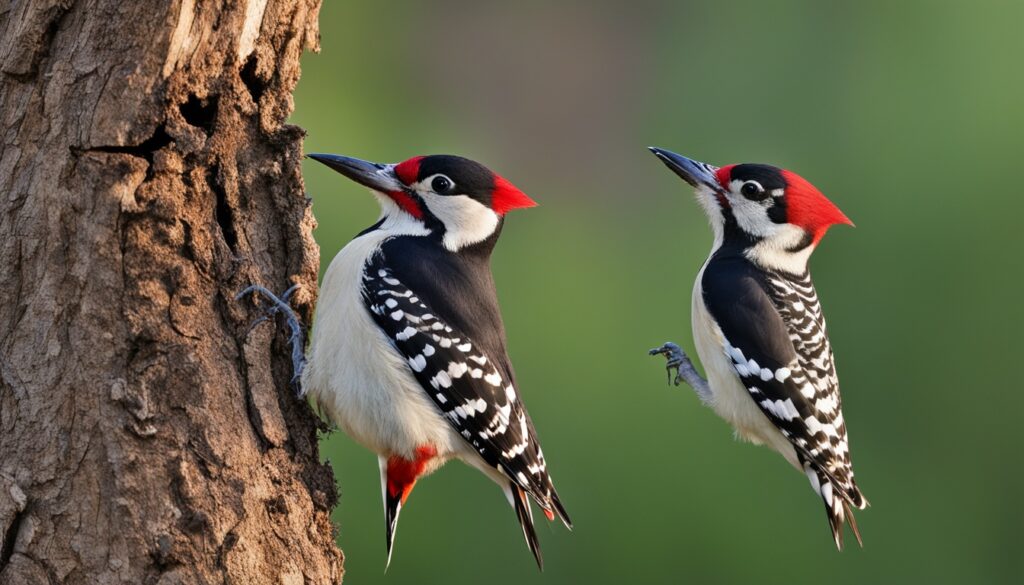
Drumming Patterns
Each woodpecker species has its own drumming style. Take the Northern Flicker, for example. Its drum sounds are quick and sharp. These can be heard in woods and even your backyard. Knowing these drumming sounds helps to ID woodpeckers better.
Vocalizations
Woodpeckers also talk with their voices. They make sounds from high, sharp calls to low, rolling noises. Learning these different calls is key to knowing the species. For instance, the Downy Woodpecker makes a fast “pik” sound. But the Pileated Woodpecker’s call is a loud “kuk-kuk-kuk.” This sound carries far in its home. Getting to know these calls improves your woodpecker identification skills.
Habitats of Different Woodpecker Species
It’s key to know where woodpeckers live for spotting and saving them. They live in many places in the U.S. Each spot is home to different woodpeckers because the plants and animals vary.
Eastern and Western Forests
Both east and west have lots of trees, perfect for woodpeckers. Here, you’ll see the Downy Woodpecker and Red-bellied Woodpecker a lot. They like these areas with plenty of trees, able to live and eat well.
Boreal and Mountain Forests
Black-backed and American Three-toed Woodpeckers prefer cooler places with evergreen trees. These areas are vital for their survival, offering great spots to eat and build nests. This shows how important it is for woodpeckers to live in different elevation zones.
Desert Scrub
The Gila and Ladder-backed Woodpecker types are found in dry, desert scrub. They do really well here despite the lack of plants and tough weather. Their special ways of living show how they’ve managed to thrive in this hard place.
Photographing Woodpeckers: Tips and Best Practices
To capture woodpeckers’ beauty, you need more than a camera. We’ll share key tips and practices. They’ll boost your bird photography game.
Best Time of Day
Woodpeckers are most lively in the morning and evening. This time is also great for photos. You’ll get better shots with the right light at these hours.
Equipment Recommendations
Good gear is key for shooting woodpeckers. Here’s what we suggest:
- Camera: A DSLR or mirrorless. It should have a fast shutter and high ISO for quick movement shots.
- Lens: A 300mm or longer telephoto lens. It lets you get close without scaring off the birds.
- Tripod: A steady tripod is a must, especially in dim light.
- Flash: Adding a flash not only fills shadows but also highlights small details.
Techniques for Capturing Clear Shots
The right methods greatly improve your photos. Try these tricks:
- Patience: Stay quiet and patient. Woodpeckers might not show right away but they will.
- Focus Settings: Set your camera’s focus to continuous. It keeps the bird sharp even as it moves.
- Composition: Using trees and branches as frames makes your photo more appealing.
- Post-Processing: After shooting, adjust with editing software to make your photo pop.
By using these strategies for woodpecker photography, you’re on your way to fantastic images. Pay attention to when you shoot, your gear, and how you shoot. Your photos of woodpecker species will be standouts.
Woodpecker Conservation Efforts in the USA
Human activities have drastically impacted woodpecker species. The Ivory-billed Woodpecker, for example, faces a serious risk of extinction. To fight this, the American Bird Conservancy and other groups lead efforts in the USA. These efforts mainly focus on protecting the places woodpeckers need to survive.
Protecting woodpecker habitats is key. Deforestation and building in their areas has put many birds in danger. By using better ways to manage land, we hope to protect these vital spaces. This includes saving old forests and planting plants that woodpeckers need for food.
Teaching people about the importance of woodpeckers is another big step. Organizations work to spread the word about the role these birds play. They talk about how woodpeckers help keep forests healthy by eating insects.
Putting together actions like saving habitats, managing land better, and teaching people is crucial. With these steps, we have a better chance at saving woodpeckers. This way, they can find a home and thrive across America.

